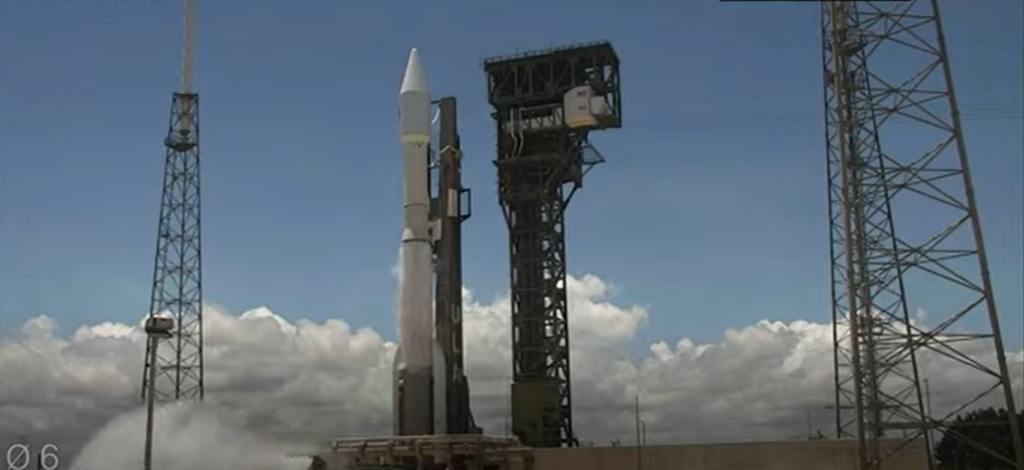
The United States Space Force (USSF) is at the forefront of advancing space-based defense systems. Its latest endeavor involves launching a cutting-edge missile warning satellite in 2025. This project is not only a significant technological achievement but also a critical step toward enhancing national security. Here, we delve into the details of this ambitious initiative, covering its objectives, technology, challenges, and broader implications.
1. Introduction to Missile Warning Satellites

Missile warning satellites are integral to modern defense systems, offering real-time surveillance and detection capabilities. These satellites monitor Earth from orbit, identifying potential missile launches and providing critical alerts. The 2025 satellite launch marks a pivotal moment in leveraging space technology for global security.
2. The Role of the US Space Force in National Security
Established in December 2019, the US Space Force is tasked with protecting American interests in space. Its responsibilities include satellite operations, space surveillance, and the development of innovative technologies to counter threats. The upcoming missile warning satellite underscores the Space Force’s commitment to maintaining strategic dominance.
3. Key Features of the 2025 Missile Warning Satellite
The 2025 missile warning satellite is expected to showcase several state-of-the-art features:
- Advanced Infrared Sensors: Capable of detecting heat signatures from missile launches with high precision.
- AI-Driven Analytics: Utilizing artificial intelligence to enhance data processing and threat identification.
- Enhanced Resilience: Built to withstand cyber threats and space debris impacts.
- Global Coverage: Providing comprehensive surveillance of critical regions.
4. Technological Advancements in Missile Detection
The new satellite incorporates groundbreaking technologies:
- Hyperspectral Imaging: Captures detailed visual data across multiple wavelengths.
- High-Bandwidth Communications: Ensures seamless data transmission to ground stations.
- Autonomous Operations: Allows for independent decision-making in emergencies.
These advancements significantly reduce response times, enabling quicker countermeasures.
5. How Missile Warning Satellites Work
Missile warning satellites operate through a combination of sensors and algorithms:
- Detection: Infrared sensors identify heat signatures from missile launches.
- Tracking: The satellite monitors the missile’s trajectory and speed.
- Data Analysis: Algorithms predict the missile’s impact zone.
- Alerting: Information is relayed to command centers and allied nations.
This process ensures prompt and accurate threat assessment.
6. The Importance of Early Warning Systems
Early warning systems are crucial for mitigating the risks of missile attacks. They:
- Provide Time for Response: Allow military forces to intercept threats.
- Enhance Deterrence: Discourage adversaries from launching missiles.
- Protect Civilian Lives: Ensure timely evacuation in targeted areas.
The 2025 satellite promises to strengthen these capabilities, offering unparalleled protection.
7. Challenges in Developing and Deploying Space-Based Defense Systems
Despite its potential, the project faces several challenges:
- Cost Overruns: Developing such advanced technology requires significant investment.
- Technological Complexity: Integrating AI, sensors, and communications systems is no small feat.
- Space Debris Risks: The satellite must navigate a congested orbital environment.
- International Concerns: Other nations may perceive the satellite as a threat, leading to diplomatic tensions.
Addressing these challenges is critical to the project’s success.
8. Collaborations and Partnerships in the Project
The Space Force is collaborating with several entities to ensure the satellite’s success:
- Private Aerospace Companies: Providing expertise in satellite design and launch.
- Allied Nations: Sharing data and strengthening global security.
- Research Institutions: Conducting studies to improve satellite functionality.
These partnerships highlight the importance of a unified approach to space defense.
9. Comparisons with Other Global Missile Warning Systems
Countries like Russia and China have also developed missile warning systems. However, the US satellite stands out due to:
- Technological Superiority: Incorporating the latest advancements in AI and sensors.
- Operational Efficiency: Faster detection and response times.
- Collaborative Approach: Engaging with international partners to enhance global security.
This comparative advantage ensures the US remains a leader in space-based defense.
10. Future Prospects of Space-Based Missile Defense
The launch of the 2025 satellite is just the beginning. Future prospects include:
- Networked Satellites: Creating a constellation for continuous global coverage.
- Integration with AI Systems: Enhancing predictive capabilities.
- Expansion to Other Threats: Monitoring hypersonic missiles and space-based weapons.
These advancements will shape the future of defense technology.
11. Public and International Reactions
The project has elicited mixed reactions:
- Supporters: View it as a necessary step to counter emerging threats.
- Critics: Express concerns about the militarization of space and escalating tensions.
Balancing these perspectives is crucial for the project’s long-term viability.
12. Conclusion: Strengthening the Future of Space Defense
The Space Force’s 2025 missile warning satellite represents a significant leap forward in space-based defense. By leveraging cutting-edge technology and fostering global collaboration, the US is paving the way for a safer future. This initiative not only enhances national security but also sets a benchmark for innovation in space technology. As the world watches, the successful deployment of this satellite will underscore the transformative potential of space exploration in addressing global challenges.

Average Rating